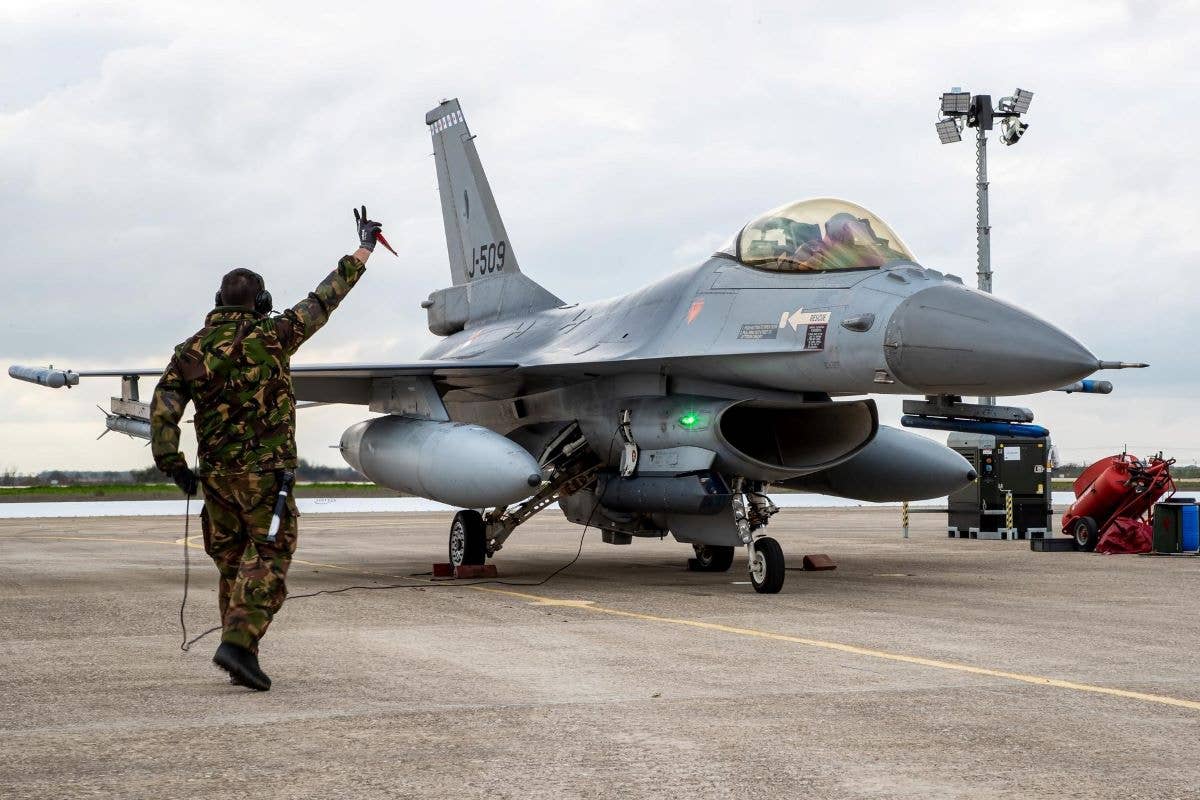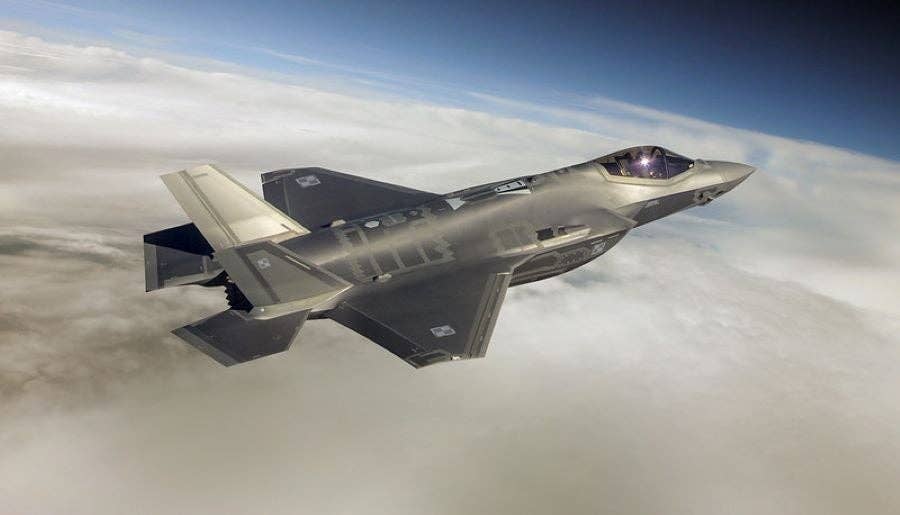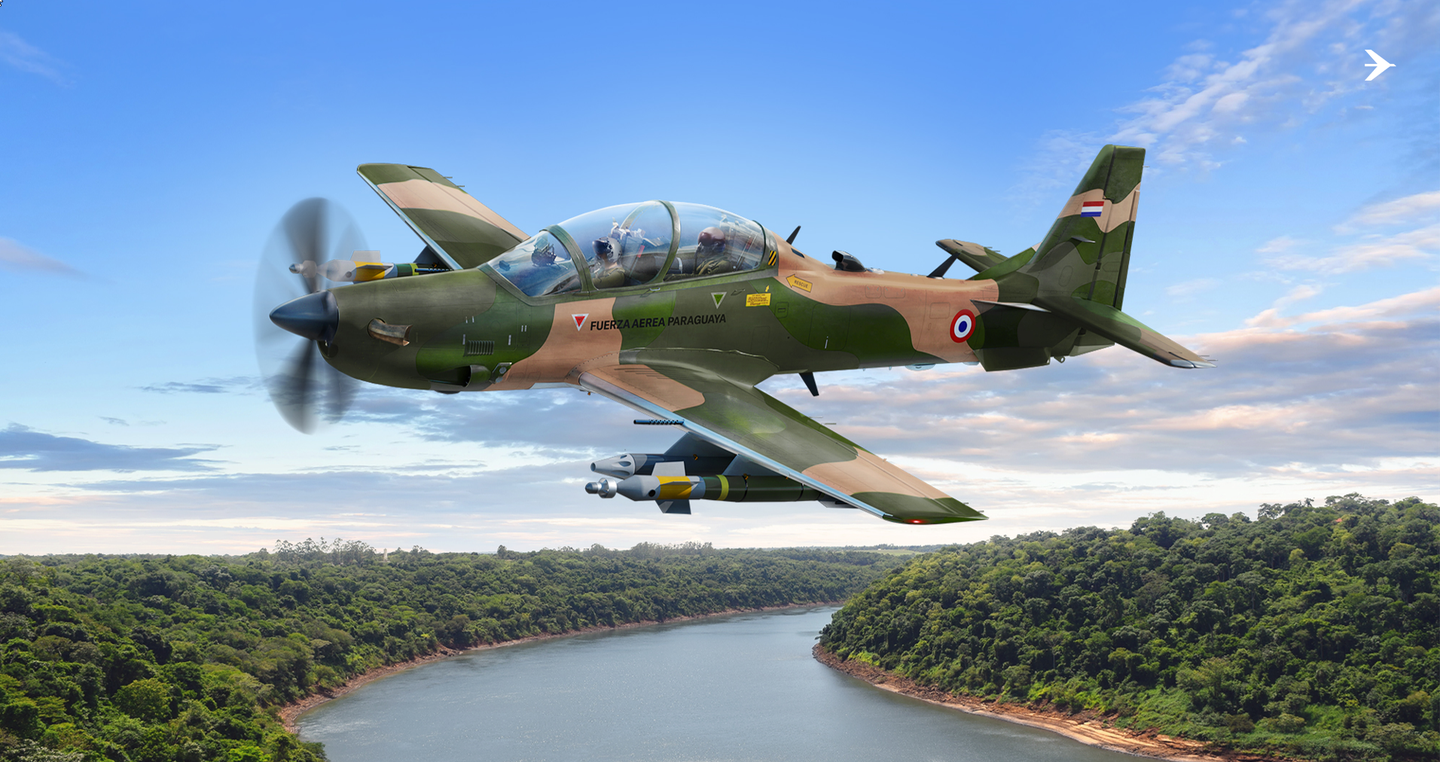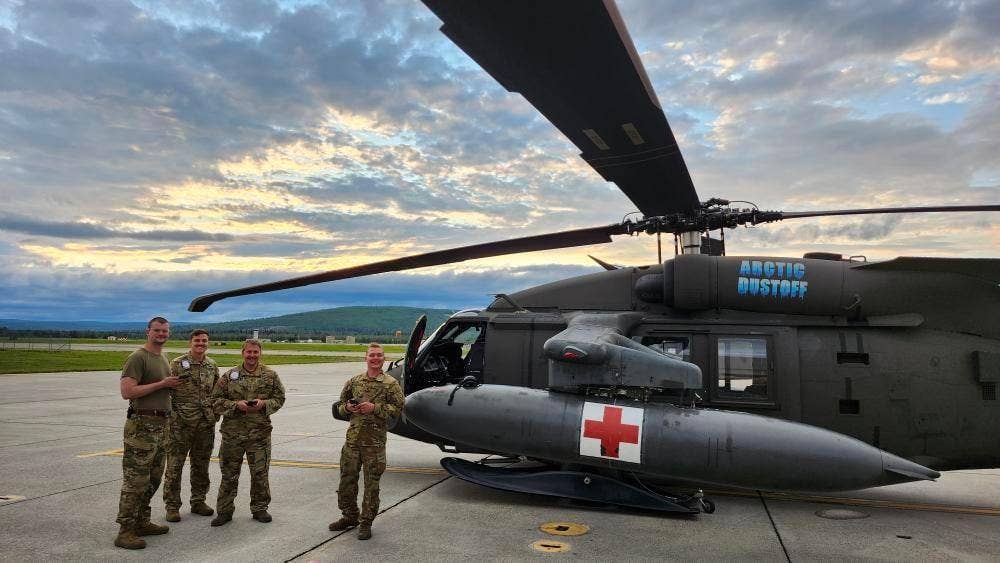Interstate TDR Developed as Unusual Kamikaze Machine
For a year during World War II, the twin-engine, piston-powered airplane flew both with a pilot aboard—and without.
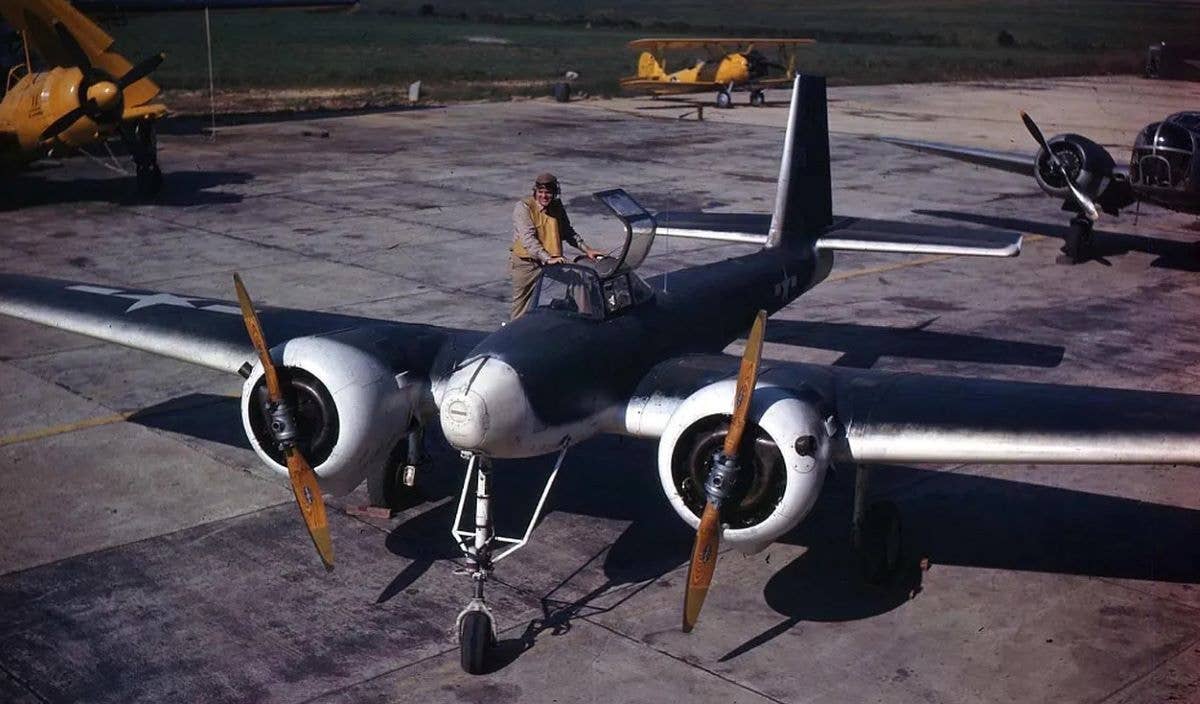
A pilot boards a prototype Interstate TDR fitted with radial engines. [Courtesy: U.S. Navy]
It’s rare to find a twin-engine, piston-powered airplane with fixed-pitch propellers and nonretractable landing gear. In the post-World War II era, almost every piston twin utilized controllable-pitch propellers, both for efficiency and also so the pilot could feather a prop after an engine failure to reduce asymmetric drag and maintain control.
It’s also rare for an airplane to be optionally piloted—capable of flying both with a pilot aboard and also as an unmanned aerial vehicle. However, the Interstate TDR incorporated all these unique characteristics to fit a correspondingly unique set of mission requirements, specifically the ability to operate as a remotely piloted flying bomb. The “TD” portion of the designation signified “Torpedo Drone,” and the “R” was an arbitrary letter assigned to the Interstate Corporation.
Compared to other manufacturing priorities during the war effort, the development of a relatively small fleet of unusual kamikaze machines was a low one. A previous attempt had been made with the Naval Aircraft Factory TDN, but it was reportedly found too expensive to manufacture and operate. Accordingly, the Interstate Corporation decided to tackle the project, aiming to find ways to improve upon the TDN.
The company got creative, awarding a contract for 200 tubular steel fuselages to the Schwinn Bicycle Company. It awarded a contract for the fabrication of wooden components to the Wurlitzer Company, a logical choice given its significant experience with manufacturing wooden pianos and guitars.
Interstate equipped the TDR with two 220-horsepower Lycoming O-435 horizontally-opposed, 6-cylinder engines. Later, three examples were fitted with more powerful Wright R-975 Whirlwind radial engines. Considering the TDR’s mission, it’s doubtful that multiengine redundancy was a primary factor in the decision to make it a twin. More likely, this layout was chosen to make room in the fuselage for the hundreds of pounds of radios and servos that enabled remote operation. Additionally, the lack of a nose-mounted engine makes that space available for a forward-looking camera.
Performance would have been modest, considering the TDR’s size and relatively low power. With a 48-foot wingspan and a maximum weight of 5,900 pounds, the airplane was comparable to the Beechcraft Twin Bonanza, yet had 150 fewer horsepower. Cruise speed was reportedly 140-150 mph with a 425-mile range. The TDR lacked brakes entirely, and thus, the takeoff procedure was rather unique. After lining up the airplane on the departure runway, ground crews would tether it to a stationary object such as a car or truck. After the pilot commanded takeoff power, the ground crew would cut it loose.
- READ MORE: The Ryan YO-51 Wowed with STOL Performance
Although the landing gear was nonretractable, there was a way to eliminate landing gear drag entirely. For one-way missions that would result in intentional crashes into the enemy, the gear would be jettisoned immediately after takeoff, extending both speed and range. This would have opened a decidedly unique job position for ground crews—searching for and retrieving all the jettisoned TDR landing gear for use in future missions.
As part of a top-secret operation, Interstate brought in RCA’s chief scientist to adapt television technology to the aircraft. This enabled pilots to control the TDR remotely from airborne Grumman TBF Avengers. By referencing small TV screens, these pilots could fly the TDRs to targets several miles away and conduct attacks from the safety of their Avengers.
While the TDR proved capable of executing its remotely piloted flying bomb missions for approximately one year in 1944, its accuracy was less than impressive, and persistent developmental problems plagued the program. These issues, combined with the overall effectiveness of conventional weapon systems, ultimately led to the cancellation of the TDR after 195 examples had been built.
- READ MORE: Flaris LAR 01 Still Has Potential
Interestingly, one TDR-1 was acquired by a private operator in Tulare, California, in 1959 with the apparent goal of utilizing it as an air tanker to help fight forest fires. This operator fitted a 200-gallon external tank on the belly of the fuselage and registered it with the civil designation N7790C. Its ultimate fate is unknown. Today, only one intact example survives, and it is presently on display at the National Naval Aviation Museum in Pensacola, Florida.
Portions of a second TDR also survive, including a large intact fuselage section, and are in the possession of a private individual in the U.S. With any luck, this person will be able to source and fabricate the necessary parts to complete a restoration.

Subscribe to Our Newsletter
Get the latest FLYING stories delivered directly to your inbox

